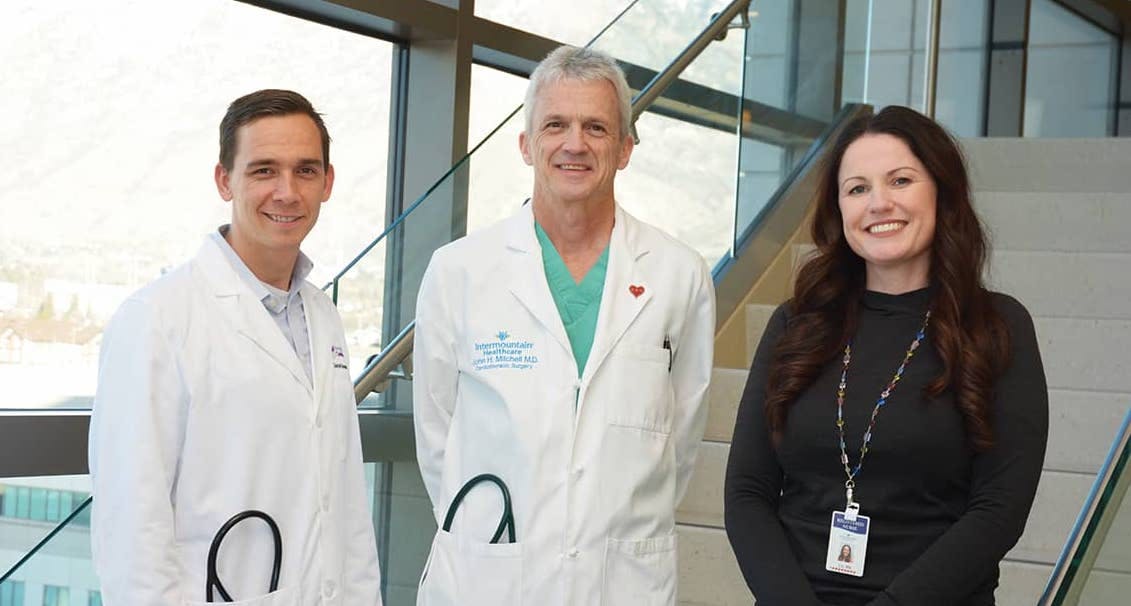
2024-02-12T10:43:02
Caramel Kettle Popcorn
- Cardiology
- Recipes
![]() Medically reviewed by Daniel Bennett MD.
Medically reviewed by Daniel Bennett MD.
July 7, 2021 | Cardiology
Specialties:General Cardiology

The TAVR surgical team is a collaborative effort between cardiologist Dr. Daniel Bennett (left), cardiothoracic surgeon Dr. John H. Mitchell, and structural heart coordinator and registered nurse Liz Bear.
-The following article appeared in the print and digital edition of the Utah Valley 360 on February 27, 2020.-
The completion of the new Pedersen Tower at Utah Valley Hospital opened possibilities not available before the facility’s expansion.
One major improvement is a dedicated operating room with the equipment required to perform a transcatheter aortic valve replacement (TAVR) surgery for patients with severe aortic stenosis that hinders blood flow through the heart.
“Traditionally, this procedure would require opening the patient’s chest, which requires longer hospital stays and more rest before returning to normal activity,” says Dr. John H. Mitchell, cardiothoracic surgeon with the Utah Valley Hospital heart team.
The TAVR procedure involves a team approach to surgery that includes an interventional cardiologist and a cardiothoracic surgeon working together to perform the surgery. At Utah Valley Hospital, Dr. Daniel Bennett and Dr. Mitchell perform the surgery together. Interventional cardiologists have expertise in utilizing catheters to treat heart conditions, so that experience makes them proficient in the mechanisms of the TAVR surgery. Surgeons, like Dr. Mitchell, are on hand to consult, assist and deal with possible complications, should they arise.
It’s a collaboration that serves the best interests of our patients,” Dr. Mitchell says. “It’s a game-changer that we can perform these procedures in our facility here at Utah Valley Hospital.
Patients who have the TAVR surgery are typically in the hospital two days and are back to regular baseline activities within 10 days. This compares to three to five days in the hospital and a six-week recovery to baseline activity.
The surgery involves a small incision — usually in the leg near the groin — and a sheath being inserted. The new valve is placed on a delivery system tube and squeezed on the balloon to make it small enough to fit through the sheath.
Once the delivery system reaches the correct position in the heart, the balloon is inflated, expanding the valve to the proper size. The new valve pushes the leaflets of the diseased valve aside and immediately begins working.
The first TAVR procedure at Utah Valley Hospital is scheduled for early January, and other such procedures will be regularly occurring after that.
WRITTEN BY:
Guest


2024-02-12T10:43:02

2024-02-05T15:00:39

2023-03-21T11:33:07

2022-12-15T13:51:19
This information is not intended to replace the advice of a medical professional. You should always consult your doctor before making decisions about your health.